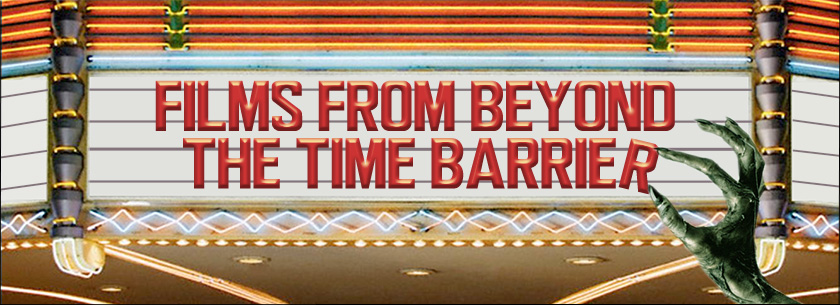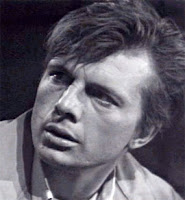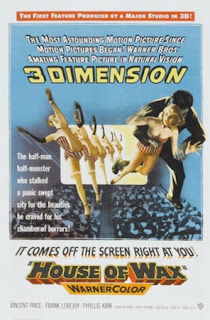Now Playing: Loon Lake (2019)
Pros: Cleverly presents the legend of the Loon Lake witch in a layered way with multiple perspectives; Wisely avoids tired old jump scares for the most part.
Cons: Focuses a little too much on the witch’s 19th century backstory at the expense of present day scares.
Pros: Cleverly presents the legend of the Loon Lake witch in a layered way with multiple perspectives; Wisely avoids tired old jump scares for the most part.
Cons: Focuses a little too much on the witch’s 19th century backstory at the expense of present day scares.
Contemporary horror films are a bit like TV reality shows. From the comfort of your couch or theater seat, you can sit in contemptuous judgement of the boneheaded choices the characters/contestants make, secure in the knowledge that you would never be so clueless.
Over the years, the checklist of things horror movie victims should never do is almost as long as the roster of zombies, serial killers, and assorted monsters that cause such poor decision-making in the first place: Don’t go in the woods, don’t go in the basement, don’t go in the attic, etc., etc.
In a refreshing switch, the protagonist of Loon Lake, 30-something widower Louis Olsen (Nathan Wilson), breaks several horror movie commandments and still manages to make it to the final reel (I use the term “reel” metaphorically of course).
But Louis’ clumsy choices pale in comparison to the whopper that gets the whole big ball of terror rolling: his decision to get away from it all by renting a nice, quiet place in the country. As horror fans well know, this is the mother of all mistakes.
Back in 1968, Rosemary’s Baby located the Devil in a trendy mid-Manhattan condo. But since then, the “peaceful” countryside has steadily gained ground as the preferred location for all kinds of horrors. The examples are too many to list here, but you know the drill: a man/woman/couple chucks the craziness of the big city and rents/buys/camps-out-in a place in the remote countryside in order to heal from the loss of a child or spouse or try to save a floundering marriage. (And that doesn’t even include the legions of teens-who-go-in-the-woods-and-get-picked-off-one-by-one flicks, which were so cleverly lampooned by The Cabin in the Woods.)
Louis’ reason for trying to find solace in the countryside is doubly tragic -- he lost his beautiful pregnant wife in a fatal car accident. He retreats to a farmhouse located in the middle of Minnesota’s bucolic lake country, but little does he know that the place harbors its own dark secret -- one that is primed to ensnare clueless city slickers who go blundering around where they don’t belong.
The origin of the evil hanging over the area is revealed in an effective pre-titles sequence in which a group of late-nineteenth century villagers, led by a gaunt, grim pastor (David Selby), drag a screaming young woman (Kelly Erin Decker, billed as Kelly Kitko) out to an old tree stump and force her to kneel over. In a final act of defiance, she spits out a curse (and her own epitaph) at the pastor:
“Kind friend, beware as you pass by. As you are now, so once was I. As I am now, so ye must be. Prepare yourself to follow me!”With the pastor’s commandment “Let the Devil take his own!”, a hooded executioner brings his axe down on the poor girl’s neck, but -- in the film’s only concession to real gruesomeness -- has to take three tries before the deed is properly done.
 |
| Mary Jane loses her head after refusing to wear Viking purple on game day. |
The next morning nosy neighbor Emery (Selby) -- the spitting image of the witch-hunting pastor (and his great-grandson, as we find out later) -- comes knocking at the door, telling Louis that he lives in the farmhouse across the field, and is always there if he needs anything. Emery tries hard to get himself invited in, but Louis is not feeling friendly and doesn’t take the bait.
Later, Louis, fishing gear in hand, climbs in his truck to go exploring the lakes in the area. He arrives at peaceful, tranquil Loon Lake, where he inadvertently makes his next big mistake. Forsaking his fishing pole for a camera, he stumbles upon a lonely old cemetery, its weathered headstones poking up amidst the tall grass. Still not realizing he’s in a horror movie, he goes in the cemetery (granted, it’s still daylight, but that turns out to be meaningless to the evil suffusing the place).
One headstone in particular catches his attention: Mary Jane Terlinden’s, whose final words before losing her head are engraved there. Ominous music swells as Louis moves back and forth over the grave, looking for a good camera shot. Suddenly, a huge loon falls out of the sky, dead as a doornail. Uh-oh.
Day 1 of Louis’ cemetery-trespassing ordeal begins. On his way back from the lake, Louis stops at a bar and strikes up a conversation with two locals. When the men hear that the newcomer was walking around the cemetery, they exchange sidelong glances.
The bar owner recounts the legend of the young witch who had been beheaded for cursing the village and causing its crops to fail. “They say she stole a baby too, killed it in some kind of ritual,” his friend sitting at the counter chimes in. “They say if you walk across her grave three times, she comes for you in the middle of the night and you die an accidental death.” You can see the wheels turning in Louis’ head as the men chatter on about locals who visited the grave and then died suddenly. “I hope you weren’t too careless when you were out there,” one of the good ol’ boys says nonchalantly as he hoists his beer. Double uh-oh!
 |
| "Witches are still out of season, but I hear the walleye fishing is great!" |
With these preliminaries out of the way, the curse starts to slowly take hold of Louis’ life. When Gracie (Brittany Benjamin), a waitress at the bar, seems to take an interest in him, they ditch the bar and the good ol’ boys for dinner and drinks at another place. Gracie notices Louis’ wedding ring, and he tells her that his wife died.
Louis gets hammered, and Gracie kindly offers to drive him back to his place. On the way, she tells him she hopes the boys at the tavern didn’t spook him too much. Then she proceeds to double-down on the spookiness by relating the story of how the witch came back from the dead to confront the pastor in his own church.
Evidence that Louis is indeed cursed accumulates slowly, then builds to a crescendo as the days are marked out. At first it’s a strange rustling sound in the cornfield late at night. Then it’s a shadowy figure that flits by a window. Soon, he’s having disturbing dreams of his dead wife holding a baby and walking through rows of corn.
Weirder still, the witch herself begins to invade his dreams. The first dream is of Mary Jane’s initial confrontation with pastor. As she’s cleaning up around the church, the randy old hypocrite tries to assault her. When she rebuffs him, he gathers up his flunkies, and they string her up in an old barn to “find the Devil’s mark” on her body. It’s an interesting sequence, as if Mary Jane was trying to plead her innocence in dreamland court.
 |
| "Hey Louis, Stephen King says not to go in the corn! Oh hell, there he goes!" |
Loon Lake wisely forsakes cheap jump scares (for the most part -- there’s one toward the end, but it comes at a point where the film needed a good old-fashioned heart-skip). It methodically rolls out a succession of uncanny events that add up to an atmosphere of simmering dread.
But Loon Lake takes detours from its own suspenseful course by having Mary Jane’s tragic backstory pop up at various points -- first through the tales told by the superstitious locals, and then, as the film progresses, in Louis’ curse-fueled fever dreams.
It’s an interesting choice. We get to know Mary Jane and Pastor Janson up close and personal and are witnesses to the birth of a spooky legend, but each sidetrack to fill in the history of the two characters subtracts some from the present-day suspense.
On the plus side, rather than being ho-hum exposition, the origin-story visions become a crazy quilt of differing perceptions. Just when we’ve decided that Mary Jane was a sweet, innocent, nature-loving victim of a tyrannical, lustful bible-thumper, we see the inverted Mary Jane as a scary witch in full possession of dark powers. And in another inverted scene, we see a much more vulnerable version of pastor Janson as he pours out his heart in an exchange with his wife (Kathyrn Leigh Scott) about the death of their son.
 |
| "I'm telling you, the walleye that got away was this long!" |
The visions reflect the disordered state of Louis’ mind as he’s in danger of breaking down in the throes of guilt and dread. Opposing worlds are brought together at the climax, begging the question, just what is the truth? Is it all in Louis’ mixed-up head, or is there something more to it? In a clever plot device, Louis’ wife’s cross necklace and Mary Jane’s primitive, Druid-like necklace figure prominently.
Loon Lake is the product of a dedicated band of independent actors and filmmakers working on a next-to-nothing budget. Just five individuals -- director Ansel Faraj, cinematographer Christopher Lange, sound person David Karon, and lead actors Nathan Wilson and Kelly Erin Decker -- handled all the production duties, from location scouting to props to costumes, in addition to their primary roles. (Decker even made the dead loon models featured in a couple of scenes.)
 |
| Pastor Janson uses a bit too much lighter fluid at the church barbecue. |
Lead actor Nathan Wilson, who grew up in the Round Lake, Minnesota area where the film is set, also co-wrote and co-produced with Faraj (Decker is the third credited co-producer). In the first half of the film, his affect is so flat as the depressed widower that the character verges on being unlikable. But as the curse takes hold of Louis’ mind and he must fight for his sanity, he becomes more animated and vigorous.
Many readers of this blog will recognize David Selby as Quentin Collins, a black sheep of the Collins family and dabbler in the occult in the long-running Dark Shadows series. As pastor Janson, Selby bellows out his self-righteousness as if he’s trying to wake the dead, but then has an opportunity to portray a much more vulnerable and human side of the character opposite another Dark Shadows alum, Kathryn Leigh Scott. The downside of that scene is that it goes on a little too long, interrupting the flow of the film for the sake of fleshing out the characters.
He’s most natural and believable as the present-day great-grandson Emery, who is earnest and friendly and a bit nosy, but is there to serve as a commiserating lifesaver for Louis.
 |
| "What do you think? It's endorsed by Elizabeth Bathory and it's supposed to do wonders for your complexion!" |
Also of note are the two colorful locals at the bar (Kevin Kunkel and Daryl Hrdlicka) and the waitress Gracie (Brittany Benjamin). When I was growing up, I spent many a summer in Midwest lake country very much like Round Lake, and met countless characters just like these.
With digital technology that makes the cost of shooting and editing a respectable feature film very affordable, and with ever-expanding streaming options, small-budget labors-of-love like Loon Lake have a fighting chance to find an audience. While there are more independent, low-budget streaming movies out there than you can shake a dead loon at, Loon Lake deserves a look for its atmospheric photography, subtle music score, good use of veteran and neophyte actors, and its quirky take on witchy folklore.
Where to find it: Loon Lake is currently streaming on Amazon Prime.
In Memoriam: Sadly, another veteran of Dark Shadows, John Karlen, passed away on January 22, 2020 at the age of 86. John's signature role on the series was as Willie Loomis, the irascible and unscrupulous con artist who was always a pain in the side of the residents of Collinsport.
John appeared in the two feature-length Dark Shadows movies, House of Dark Shadows (1970) and Night of Dark Shadows (1971), and then became a reliable guest star on almost every TV show you can think of through the 1990s. Outside of Dark Shadows, his biggest recurring role was as Tyne Daley's husband on the 1980s hit show Cagney & Lacey.
Horror fans will also remember him for his appearances in two cult classics, Daughters of Darkness (1971) and the Dan Curtis-produced TV movie Trilogy of Terror (1975)
John appeared in the two feature-length Dark Shadows movies, House of Dark Shadows (1970) and Night of Dark Shadows (1971), and then became a reliable guest star on almost every TV show you can think of through the 1990s. Outside of Dark Shadows, his biggest recurring role was as Tyne Daley's husband on the 1980s hit show Cagney & Lacey.
Horror fans will also remember him for his appearances in two cult classics, Daughters of Darkness (1971) and the Dan Curtis-produced TV movie Trilogy of Terror (1975)















